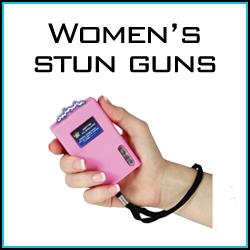Table of Contents
- Understanding the Legal Framework for Stun Gun Ownership in Minnesota
- Key Restrictions and Permitted Use of Stun Guns Within State Boundaries
- Guidelines for Safely Carrying and Using Stun Guns to Avoid Legal Issues
- Practical Tips for Compliance and Responsible Stun Gun Handling in Minnesota
- To Conclude
Understanding the Legal Framework for Stun Gun Ownership in Minnesota
In Minnesota, the legal landscape surrounding stun gun possession is shaped by a nuanced balance between individual rights and public safety. Generally, stun guns are treated similarly to other non-lethal self-defense tools under state law, but there are specific restrictions on who may carry them and under what circumstances. For example, the law prohibits possession by felons and individuals subject to certain restraining orders. Additionally, the use of stun guns is permitted primarily for self-defense, but must be conducted within reasonable boundaries to avoid criminal liability.
Key points to consider include:
- License requirements for carrying a stun gun are not mandatory, differentiating it from firearms regulations.
- Certain places, such as schools and government buildings, impose restrictions or outright bans on stun gun possession.
- Using a stun gun in the commission of a crime or in an aggressive, unlawful manner can result in significant penalties.
Understanding these regulations helps ensure that stun gun owners in Minnesota remain compliant with state statutory requirements, reducing the risk of inadvertent legal issues while exercising their right to self-protection.
Key Restrictions and Permitted Use of Stun Guns Within State Boundaries
In Minnesota, the possession and use of stun guns are subject to specific legal boundaries designed to balance personal safety with public order. Individuals must be at least 18 years old to legally own or carry a stun gun. It is important to note that while Minnesota permits stun gun ownership, their use is strictly confined to self-defense purposes only. Using a stun gun in any offensive or aggressive manner is illegal and can lead to criminal charges. Furthermore, stun guns are prohibited in certain sensitive locations such as government buildings, schools, and private properties where explicit bans are in place.
Permitted use also extends to licensed security personnel under specific conditions, who must adhere to all state regulations on stun gun handling and deployment. Key restrictions include:
- No carrying of stun guns in secured areas like courthouses or correctional facilities
- Prohibition of stun guns on public transportation systems
- Stun guns cannot be sold to minors or individuals with felony convictions
- Disclosure to law enforcement may be required if stopped or questioned while carrying
Understanding these limitations is critical to lawful use, ensuring protection without crossing legal boundaries.
Guidelines for Safely Carrying and Using Stun Guns to Avoid Legal Issues
When carrying a stun gun in Minnesota, it’s essential to adhere to certain practices to remain compliant with state laws and avoid unnecessary legal trouble. Always ensure your stun gun is used strictly for self-defense purposes and never to intimidate or threaten others. Keep the device securely concealed on your person or within close reach to prevent accidental discharge or misuse. Additionally, familiarize yourself with places where stun guns are prohibited, such as schools, government buildings, and certain private properties, as possessing them in these areas can result in criminal charges.
To further minimize risks, consider the following:
- Obtain and carry any necessary permits or documentation if required by local jurisdictions.
- Regularly maintain and test your stun gun for functionality while following manufacturer guidelines.
- Avoid using the device under the influence of alcohol or drugs, ensuring sound judgment in high-pressure situations.
- Inform yourself on Minnesota’s evolving self-defense laws to stay updated on any changes pertaining to stun gun possession and use.
Practical Tips for Compliance and Responsible Stun Gun Handling in Minnesota
To ensure responsible stun gun ownership in Minnesota, always verify that your device complies with state regulations, including the types of stun guns allowed. It’s essential to store your stun gun securely and keep it out of reach of children or unauthorized users. When carrying your stun gun in public, avoid situations that could escalate conflict unnecessarily. Familiarize yourself with local ordinances, as cities in Minnesota may have their own specific restrictions or requirements regarding stun gun possession and use.
Practical habits that protect you and others include:
- Regularly check and maintain your stun gun to ensure it functions properly in case of emergency.
- Practice safe handling and avoid using the device unless absolutely necessary for self-defense.
- Educate yourself about when deployment is legally justified to avoid potential criminal charges.
- Keep documentation such as purchase receipts or permits handy to prove lawful possession if questioned by law enforcement.
To Conclude
In summary, navigating Minnesota’s stun gun laws requires a clear understanding of both state regulations and local ordinances to ensure responsible and legal use. Whether you’re considering carrying a stun gun for self-defense or simply want to stay informed, being aware of the permit requirements, restrictions, and legal boundaries is essential. Staying updated with any legislative changes will help you remain compliant and confident in your decisions. Remember, responsible ownership not only protects you but also contributes to the safety of your community.Check Our Other Blogs
- StunGun – Your Trusted Source for Stun Guns, Laws, and Self-Defense Tips
- PepperSprayLaws – Your Trusted Resource for Pepper Spray Information
- StunGunLaws – Your Trusted Guide to Stun Gun Legality and Safety





